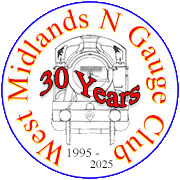top of page

Origins - 'Gibben Quarry' takes its name from Derek Gibben who donated the layout to the club at the end of 2016. It was just a track on a baseboard and was going to be the start of a N gauge continental railway layout.
We realised that he had more sidings etc. at the front than the small fiddle yard at the back, so track was relayed and electrics redone to use these sidings as part of a fiddle yard where engines / trains could be stabled whilst others were manoeuvred or ran through.
It’s designed to show what can be done in a relatively small space using just one controller.
A small team of members worked on the layout during 2017 to ready the layout for its debut at The International N Gauge show in September. It is not meant to be a specific era, or even a specific place, as you can run steam or diesel locomotives, depending solely on their ability to go round a couple of tight curves.
It is hoped it will inspire other modellers who don’t have the room we have for larger layouts.
History - The firm of Gibben & Taike started life in late Victorian era as a small aggregates firm with a little hole in the ground next to the railway. It’s workers being from the nearby hamlet hadn’t far to travel, the small industrial building between the railway and the quarry being its office and headquarters.
Early extraction was by horse and cart taken the short distance to the adjacent railhead and loaded into 4-wheeled stock hired from the railway company. This gave a very limited output and provided the company with a somewhat “hand to mouth” existence. However, the grand schemes of the Victorian era needed considerable aggregates so prices were buoyant and they survived into the Edwardian times.
As the political turmoil in Europe gathered pace, the firm faced its own problems. The quarry had been in operation for a number of years and had progressively worked its way away from the railhead. The railborne tubs which had replaced the carts had been a success but now could no longer cope with demand and were life expired.
The company faced a stark choice, expand and modernise or die.
The board considered many options and decided to raise funds and invest in a conveyer system from the extraction face to the railway with wagon loading facilities over its loading bay. Mr. Richard Sutcliffe had installed such a system in a number of coal mines and they had proved highly efficient and economical. His company would be approached to investigate the feasibility and financing of such a system. Mechanisation worked and the company was able to continue, while building and rebuilding after and during two World Wars kept the requirement for aggregate at a good level.
Track plan -

20221203_164341

20221203_162027

20221203_162106

20221203_164341
1/11


Gibben Quarry
bottom of page


